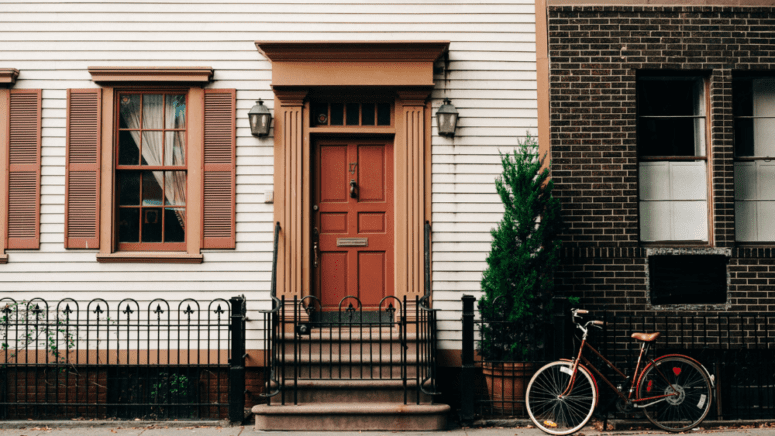How Much Will My Home Rent For? 6 Ways to Calculate a Fair Rent Price
- Published on
- 14 min read
-
 Steph Mickelson, Contributing AuthorClose
Steph Mickelson, Contributing AuthorClose Steph Mickelson Contributing Author
Steph Mickelson Contributing AuthorSteph Mickelson is a freelance writer based in Northwest Wisconsin who specializes in real estate, building materials, and design. She has a Master's degree in Secondary Education and uses her teaching experience to educate and guide readers. When she's not writing, she can be found juggling kids and coffee.
-
 Richard Haddad, Executive EditorClose
Richard Haddad, Executive EditorClose Richard Haddad Executive Editor
Richard Haddad Executive EditorRichard Haddad is the executive editor of HomeLight.com. He works with an experienced content team that oversees the company’s blog featuring in-depth articles about the home buying and selling process, homeownership news, home care and design tips, and related real estate trends. Previously, he served as an editor and content producer for World Company, Gannett, and Western News & Info, where he also served as news director and director of internet operations.
You’ve debated whether to put your house up for sale or rent it out. You’ve analyzed the market, done your research, and, after lengthy consideration, you’ve finally decided to hold on to your house and generate rental income. But at this point, you’re wondering: “How much can I rent my house for?”
Landing on a fair market value for your rental property can be a big challenge, especially if you haven’t rented or set a rental price before. You don’t want to leave money on the table, but you also don’t want your rental sitting vacant because you’re charging too much.
There’s no one-size-fits-all answer to setting your rent price, but there are ways to make it easier to determine the right price. With the help of HomeLight’s top agent surveys, market data, and insights from expert real estate professionals, we’ve gathered six ways to calculate how much your home will rent for.
What to know before setting rent
Before you can even draft a number for your rent, there are some considerations to take into account. Texas real estate agent Ryan Kutter, who has 20 years of experience in the industry, says the first thing you need to think about is why you want to rent your home.
What is your goal?
Are you looking for monthly revenue and hoping to receive some extra income? Or are you interested in what Kutter calls “asset appreciation,” meaning owning real estate and reaping the benefits of its appreciation while a renter subsidizes your costs?
Partner with an expert
Jeremy Lock, a top agent in Portland, Maine, who is well-versed in rental properties, recommends going into it as realistically and objectively as possible. He suggests “bringing a reputable agent who has experience with rentals into the mix.”
Consider your unique needs
Every homeowner is different, and the reason for renting varies across all properties. Lock suggests making a list of your unique needs and long-term goals to help you figure out how your rental price fits into your future plans and what price meets all of your needs.
Know the rental market trends and forecasts
Another factor you should be familiar with before setting the rent price is the current market. Since the pandemic, the housing market has seen some wild shifts.
U.S. home prices have risen significantly in recent years. Data from the U.S. Census Bureau and the U.S. Department of Housing and Urban Development shows the median sales price of an existing home jumped over 30% in the past five years, going from $317,100 in 2020 to $416,900 in the first quarter of 2025. Of course, home affordability varies widely by state — from a median price of $252,000 in Iowa to a median price of $846,830 in California.
Along with higher home prices, high interest rates and tight inventory are making buying a home more difficult for homeowners looking to move and first-time homebuyers.
According to The Harvard Joint Center for Housing Studies’ State of the Nation’s Housing 2025 Report, the household income needed to afford the median-priced U.S. home reached $126,700 in 2024. This marks a significant increase from an inflation-adjusted $82,000 needed in the first quarter of 2021.
Many Americans are being priced out of the market, especially first-time buyers who are delaying their plans to buy — which puts them in the rental market.
Here are six ways to calculate a fair rent price for your home.
Method 1: Set rent using the home’s value
One rule of thumb is to set the rent price at 0.8% to 1.1% of the home’s value per month. Based on a home value of $416,900, this would make for a rental price somewhere between $3,335 and $4,586. If you’re unsure of your home’s value, you can use comps (comparables) or leverage online tools to determine what your home might be worth before setting a price.
While this can be used as one input in figuring out how much your home will rent for, Lock recommends against using this as the only input and instead recommends looking closely at comparables and factoring in the nuances of the property.
Leveraging online tools
Start by using HomeLight’s home value estimator or a similar tool to determine your home’s preliminary value. These resources will give you a ballpark picture of your home’s worth and provide a solid starting number to work with.
Consider the supply and demand
Home values change, and sometimes change quickly, when supply is low and demand is high, and vice versa.
- If housing prices are up and the inventory is low, the demand for rentals also goes up.
- When housing prices are low, and there is more inventory, demand for rentals typically goes down.
But, according to Cosmo Spellings, a real estate agent with over 20 years of experience in the Florida panhandle area, you can only expect about a 10% fluctuation up or down in rental prices as housing markets shift.
So, if a property rents for $1,000 a month in a normal market, he says you could expect to get $1,100–$1,150 in a high market.
How to set your rent
For homes worth significantly less than the median U.S. value, you probably want to set a rental price closer to 1.1%. For homes worth more, 0.8% is perhaps a more realistic rent price.
Consider the housing market and the level of supply and demand in your area. If there is a high demand for rental homes, you can set the price a little higher, but if demand is low, you may need to make the home more appealing with a lower rental rate.
Renters are more willing to pay a higher dollar in rent if the property is turnkey: new floors, new countertops, new appliances. It has that brand-new house feel.
 Cosmo Spellings Real Estate AgentClose
Cosmo Spellings Real Estate AgentClose Cosmo Spellings Real Estate Agent at Assurance Realty of NWFL
Cosmo Spellings Real Estate Agent at Assurance Realty of NWFL
- Years of Experience 20
- Transactions 1012
- Average Price Point $153k
- Single Family Homes 885
Method 2: Set rent using comps
Similar to how you, an agent, or an appraiser can use comps to determine home value, you can also use comparable rental properties to determine the rent price.
Determine rental comps by researching similar properties
To determine rental comps, find rental homes comparable to yours in size, age, features, location, and condition that are renting and evaluate their current rent.
There are numerous ways to research rental comps, but start by searching local rental listings in print publications and online sources. Additionally, sales prices might help you gauge how the market looks. You can also reach out to other landlords or property management companies to see what their rental rates are. There’s also value in joining online forums for landlords.
How to set your rent
The key features to examine in comps are the square footage, number of bedrooms, number of bathrooms, and its location, Kutter says.
Lock emphasizes the importance of location, saying, “Location drives so much, so you really have to take that into account and be looking primarily at rentals that are close to the subject property.”
In addition, Spellings says any recent renovations that increase home value or desirability should be considered as well. “Renters are more willing to pay a higher dollar in rent if the property is turnkey: new floors, new countertops, new appliances. It has that brand-new house feel,” he says.
Once you find a few rentals that are similar to yours, set your price. Make sure to keep in mind any unique features or upgrades your home has as well. So, if the house down the block is renting for $3,000, but your property offers upgrades or recent renovations, such as new hardwood floors or a fully remodeled kitchen, you may be able to set your price higher.
Method 3: Set rent using your own financial needs
Your financial situation and goals can factor into setting the rent. While this might be tricky, it can be a good way to establish a competitive rate that gets a high-quality renter in the door who wants to stick around while also making sure you meet your financial needs.
Determining your needs
Figure out your monthly mortgage payments, taxes, insurance, and other expenses. Consider that maintenance for your rental property can consume upward of 15% to 20% of your potential rental income. You should also determine how much income, if any, you’ll need to pull from your rental income and how much will be used for home-related expenses.
How to set your rent
Base your rent around what you’ll need to meet your monthly financial obligations.
Note that even if you come in low or break even each month between what you pay for your house and what you make in rent, you may still come out ahead because your home is being paid off and is likely to appreciate in value.
Method 4: Set rent using an online calculator
While they might not be totally accurate, online rental calculators can give you a sound basis for setting rent. However, it’s important to find the right calculator and double-check rates against other sources, like comps.
Calculating your rental price as a landlord
Determining the ideal rent for your property involves balancing profitability with market competitiveness. In this simple rent calculator, let’s use a median home value and consider common landlord expenses and market dynamics to illustrate.
Scenario: Pricing a Rental Property
- Median Home Value: $416,900
Step 1: Calculate base rent using home value rule of thumb
One common rule of thumb is to set the monthly rent price between 0.8% and 1.1% of the home’s value.
- Low End (0.8%): $416,900 x 0.008 = $3,335.20
- High End (1.1%): $416,900 x 0.011 = $4,585.90
Based on this rule, your target monthly rent could be in the range of $3,335 to $4,586.
Step 2: Factor in maintenance costs
Maintenance for a rental property can consume upward of 15% to 20% of your potential rental income. While this isn’t added directly to the tenant’s rent, it’s a critical factor for your profitability and should be covered by your gross rental income.
Let’s take the midpoint of our base rent range, say $3,960.
- Estimated Monthly Maintenance (15% of rent): $3,960 x 0.15 = $594
- Estimated Monthly Maintenance (20% of rent): $3,960 x 0.20 = $792
This means a portion of your collected rent ($594 to $792) would typically be allocated to cover maintenance, highlighting the need to set a rent that accommodates these expenses while still leaving room for profit or covering other costs like mortgage, taxes, and insurance.
Step 3: Adjust for market fluctuations
Market conditions can cause rental prices to fluctuate. You can typically expect about a 10% fluctuation up or down in rental prices as housing markets shift.
Let’s assume a base rent estimate of $3,960 based on your home’s value and profitability needs.
- In a high-demand market (10% increase): $3,960 x 1.10 = $4,356
- In a low-demand market (10% decrease): $3,960 x 0.90 = $3,564
Conclusion: Example rental pricing
Considering a median home value of $416,900, a landlord might aim for a base rent around $3,960. However, depending on the current market’s demand, this price could be adjusted:
- If demand is high: You might be able to price your rental closer to $4,356 per month.
- If demand is low: You may need to price it closer to $3,564 per month to attract tenants quickly.
Key considerations for landlords:
- Local comps: Always research comparable rental properties in your specific area to gauge competitive pricing.
- Property condition: Turnkey properties with new features (floors, countertops, appliances) can often command higher rent.
- Financial needs: Ensure your rent covers your mortgage, taxes, insurance, and allocated maintenance costs, with room for desired profit.
- Expert advice: Consulting a real estate professional experienced in rentals is highly recommended, as they can provide precise market data and guidance.
Once you’ve gone through your calculations, set your rent somewhere in the range you found. Consider your short- and long-term goals in renting your home and what financial needs you have as well.
Also, keep in mind a calculator can only provide an estimate, which may or may not be accurate for your situation. It can’t consider other variables, such as features unique to your rental, your specific market, or your financial needs outside of the property.
Finding the right rent calculator
It’s best to use several different calculators so you can get a sense of the price range. Look for ones that take into account a variety of inputs, such as your mortgage, operating expenses, and any fees.
Most of these rent calculators are interactive, allowing you to check how your rental price could fluctuate with your home value. Make sure you’re looking at median error rates or other data to get an idea of how far off the rent could be.
Method 5: Use a real estate professional
If you don’t want to go it alone when determining how much your home will rent for, use the tried-and-true method: consult an experienced real estate agent.
Tapping into your agent’s expertise
Kutter says a real estate agent or broker can be a great guide as you put your rental on the market. They have numerous resources, such as the MLS database, that can provide extensive data and information about the market in your area. Plus, they have on-the-ground knowledge of the area and may know what other homes are renting for.
Lock says to choose an agent who knows what they’re doing and “ideally has some rentals themselves.” The right agent can help you determine how much your home will rent for and even help you with the leasing process, which includes listing and marketing the property, finding and screening potential tenants, showing the property, and assisting with lease signing. According to Lock, the fee to do that is typically equivalent to one month’s rent.
An experienced agent can also help keep you informed of legislation and state laws that may impact the rent price of your home. Factors include rent control and other housing legislation.
Find a reputable and trusted agent who has extensive experience in your ideal location, especially with rentals. Ensure they have the proper credentials you’re looking for, and don’t be afraid to interview a few potential candidates.
This recommendation also applies if you’re looking to buy property with an eye toward renting it out. Working with a top buyer’s agent can help you find the perfect rental home.
How to set your rent
Simply ask your agent, “What can we get for the home?” They will dive into the details, looking at how long the home has been vacant, what similar homes rent for, and what your needs are.
An agent will most likely use a combination of many methods listed here, including comps and your financial needs, to set your rental price. In fact, that’s one of their biggest perks: They’ll do almost all the work for you.
Method 6: Leave it to the rental company
Both investors and regular homeowners alike often see great benefits from using a rental company to rent their property.
Understanding a rental company’s role
According to Spellings, a rental company can “become a wall between you and the occupants. It takes that emotion out of it.” They deal with problems, late rent, and can even help with eviction processes if you have to go that route.
However, remember that rental companies charge a fee for their service — about 10% to 12% of the rental price, according to Spellings.
When searching for the right company, ask around for referrals and check out online reviews.
How to set your rent
Your rental company will most likely set your rent price for you, but not all will, Kutter says. However, they should provide information, such as comps and market value, that can assist you.
Before signing any documents, ensure you know exactly how the management company sets the rent price and chooses tenants, as well as how much of a cut they will take.
How to create a rental listing
You’ve done your calculating and set your rental price. Now it’s time to get your home occupied. As with most things, the best place to start is with the basics. Make sure your listing includes the square footage, number of rooms and bathrooms, and any upgrades you’ve recently done.
On top of that, emphasize the features that make it stand out among the competition. Is it within walking distance of shops and restaurants? Does it have a private yard? Is it near the neighborhood schools? You bought the house at one point, so think about all the things that attracted you to it.
Kutter says everyone knows about the three L’s of real estate: location, location, location. But he also says to consider the other top threes:
- Does it look good?
- Does it feel good?
- Does it smell good?
People will want to know all of that in your listing.
Lastly, Kutter also says properties that are vacant and clean tend to rent faster. A potential renter will most likely be interested in a property where no one is living (as long as the property is in good shape) over a home where they have to wait for the current tenant to leave. So, make sure your listing includes when your property is available as well.
Lock believes it’s “money well spent to bring an agent into the mix.” The agent will help you get the place ready for rent, as well as help with the listing process, dealing with tenant inquiries, and more.
Use multiple methods to set a home rental rate
While there’s no one-size-fits-all answer to setting your rent, these methods should help find a rental price that’s both fair to renters and profitable for you. While you can choose one, it’s best to use a combination of these methods to set the most accurate rental price.
Setting the right price may take some trial and error, and it can always be adjusted up or down as needed. If you find that the home is sitting empty despite being listed and advertised, you might be too high. And if it gets snatched up immediately, you may have gone too low and will need to adjust at lease renewal or when it becomes vacant again.
If method No. 5 appeals to you, HomeLight can connect you with a top real estate agent in your market. Our free Agent Match tool analyzes over 27 million transactions and thousands of reviews to determine which agent is best for you based on your needs.
Writer Garrett Callahan contributed to this story.
Header Image Source: (christian koch/ Unsplash)








